Call me curious, there are secrets in the Bible. Hidden between the papyrus leaves. The deeper I look, the more interesting it gets. We cannot imagine the power this book has in our lives. We hardly know the political reasons behind the creation of Christianity. But the Bible was restricted, and translations into English were illegal. Did you know that 80% of all Bibles sold today are the King James from 1611, which is NOT approved by the Vatican? Did you know that virgin birth is a simple mistranslation from Hebrew to Greek that they’ve known for centuries? Yep. They just looked the other way. However, there is much truth in the Bible as well.

The awakening of mankind is inevitable. We know that the roots of Christianity are true. However, much has been invented. Now we need to know the difference. This is our time for myth-busting. I am here doing my part to destroy lies. This article shares a few interesting hidden details about our Western heritage.
Executive Summary:
- The Birth of Christianity: Constantine Unifies Diverse Factions
- Council of Nicaea Chooses a New Name for God – 325 AD
- How Were New Testament Gospels Assembled?
- Jesus’ Mother Mary not a Virgin? Mistranslation from Hebrew.
- The First English Bible Translation was Illegal, by John Wycliffe.
- William Tyndale Killed for Heresy, but His Bible Lives On!
- King James Bible Proves Royal Divine Right Comes from God.
- Second Vatican Council 1962 Launches Modern Bible Revision to Embrace all Faiths.
- Moral of the Story: All Bibles have been tweaked, a reminder to cultivate God on your own.
 It all began in Byblos, the busy Phoenician city. This trading port 20 km north of present-day Beirut, Lebanon was known for receiving papyrus from Egypt for books. So, early Bibles were called Byblos, all hand-written in Aramaic, Hebrew, Greek, and later Latin. To translate the sacred books, many factors had to be taken into account, like politics, traditions, customs, social classes and wealth, carefully considered.
It all began in Byblos, the busy Phoenician city. This trading port 20 km north of present-day Beirut, Lebanon was known for receiving papyrus from Egypt for books. So, early Bibles were called Byblos, all hand-written in Aramaic, Hebrew, Greek, and later Latin. To translate the sacred books, many factors had to be taken into account, like politics, traditions, customs, social classes and wealth, carefully considered.
1. The Birth of Christianity: Constantine Unifies Diverse Factions
In 4th century Rome, Emperor Constantine faced uncountable challenges. He waged wars on all sides, and struggled with countless religious differences across the vast Empire. Even worse, he endured brutal disputes over his legal title to the throne. Constantine’s main problem was the uncontrollable disorder among church elders and their diverse worship of numerous gods. Finally, he united all diverse religious groups under a new composite “deity”. He ordered the compilation of new and old sacred writings from all over the world into a uniform collection that became the New Testament.
As a political strategy, Emperor Constantine sought to unite his empire by merging the Christian factions with local Pagan worship and Mithraic secret societies. Pagans could keep their traditional celebration dates while the Christians got to keep their names and idols. So, Paganism and Mithraism got dressed up in Christian clothing. It was a compromise by all parties that allowed Constantine to expand his empire and secure his throne, with himself as the undisputed sacred dynastic ruler.
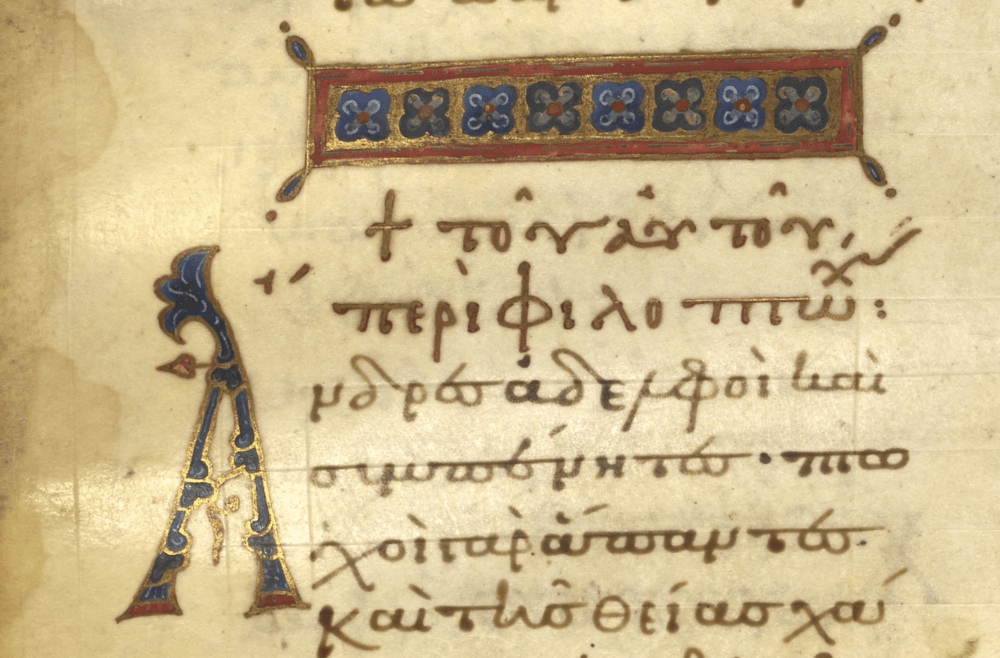
Christianity is unlike any other faith because it is a “created” religion. Imagine the challenge of creating an entirely new faith from scratch based on a person that you never met that had lived some 350 years earlier!
Early versions of the Old Testament were in Hebrew, and later Greek. Many textual corruptions, additions, omissions, and transpositions crept into the Hebrew Torah Between 200 BCE and 400 CE. The oldest most reliable translation of the Old Testament from Hebrew is called the Septuagint. Legend tells us that the Greek Pharaoh, Ptolemy II, gathered 72 elders and isolated them in 72 separate rooms, with the task translate the Torah (first five books of the Old Testament) into Greek. The word Septuagint, means “the 70”. This famous translation dates from around the 3rd to the 2nd century BCE, which was well before the Council of Nicaea, and advent of Christianity in Rome.
The Roman Catholic church relied on the Septuagint to translate the First Testament, called Vulgate, meaning “common Latin language”. Many early Christian writers, such as Paul, quoted from the Septuagint. However, there were some notable omissions in the Vulgate, such as the Apocrypha texts that refer to the life of Jesus, the Gnostic Bible, and the Nag Hammadi manuscripts. These texts were considered “noncanonical”and were abandoned, hidden or destroyed.
The New Testament was a brand new undertaking, put together by Roman church clerics from thousands of other documents in myriad languages. Constantine had assembled all the great sacred scriptures of the time at the Council of Nicaea. Some came from as far away as the Indian Mahabharata. Thus, many of the stories in the New Testament, as new evidence is revealed, do not represent historical realities. And many of them were written after the Council of Nicaea, in the 4th century AD. The church does not deny this.
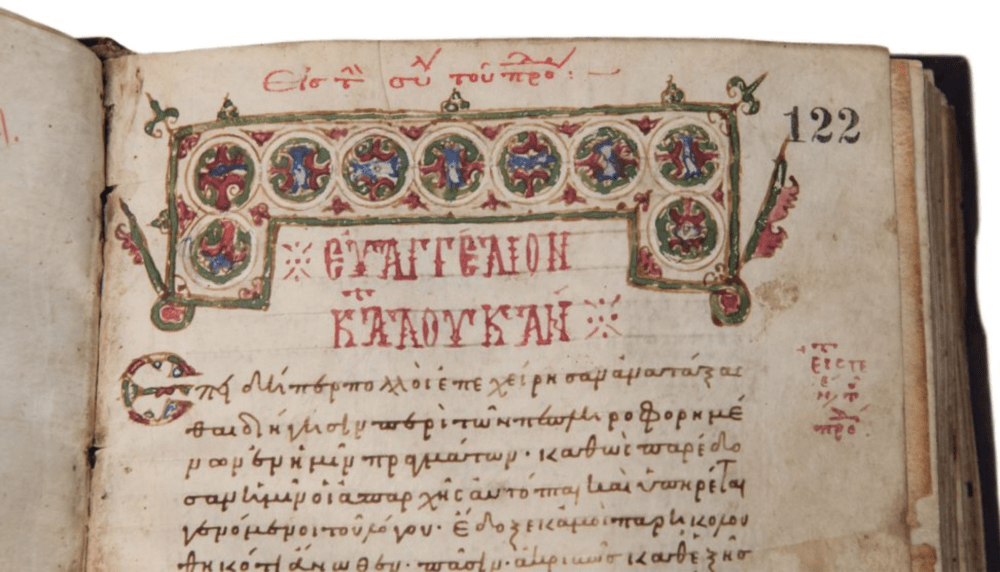 At this point the historic truth of Christianity slips into one of the biggest black holes in history. There’s a good reason why the New Testament didn’t exist until the fourth century: That’s because much of it was not written until then. And in this we see evidence of one of the the greatest misrepresentations of all time. At the Council of Nicaea, groups of church elders presented the case for “many gods and many lords”. Numerous religious sects existed, each with differing doctrines. The groups debated over qualities of their various gods and “altar was set against altar” competing for audiences within the Empire.
At this point the historic truth of Christianity slips into one of the biggest black holes in history. There’s a good reason why the New Testament didn’t exist until the fourth century: That’s because much of it was not written until then. And in this we see evidence of one of the the greatest misrepresentations of all time. At the Council of Nicaea, groups of church elders presented the case for “many gods and many lords”. Numerous religious sects existed, each with differing doctrines. The groups debated over qualities of their various gods and “altar was set against altar” competing for audiences within the Empire.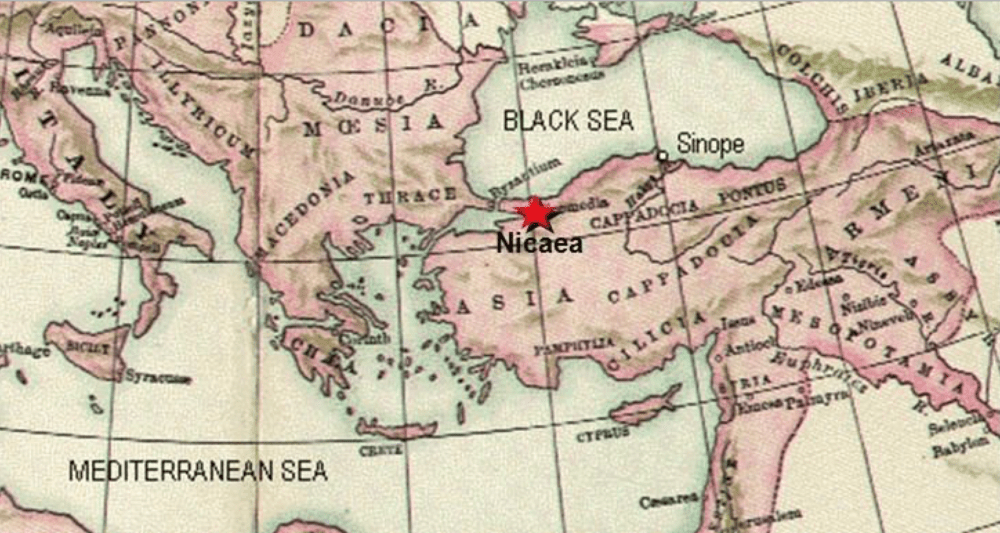
In Constantine’s time the Christian religion did not exist, and the Church has acknowledged that the tale of his “conversion” and “deathbed baptism” are “entirely legendary”. Constantine saw in this confused mayhem of fragmented dogmas an opportunity to create a new and combined state religion, and to protect it by law. He began by issuing a decree commanding all church elders and their subordinates “be mounted on asses, mules and horses belonging to the public, and travel to the city of Nicaea”, which is in today’s Turkey near Constantinople.
They were instructed to bring with them the testimonies they taught, “bound in leather” for protection during the long journey, and to surrender them to Constantine upon arrival in Nicaea
Their writings totaled, “in all, two thousand two hundred and thirty-one scrolls and legendary tales of gods and saviors, together with a record of the doctrines orated by them”.
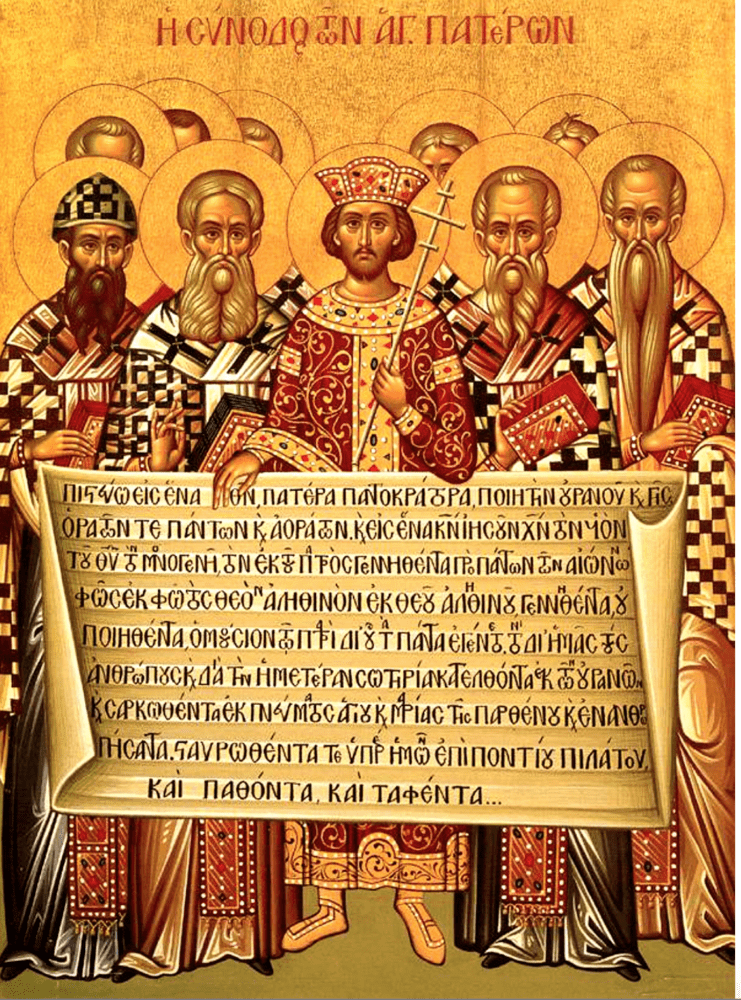
2. Council of Nicaea Creates a New God and a New Religion: 325 AD
Thus, the first ecclesiastical gathering was a bizarre event that provided many details of early clerical thinking and presents a clear picture of the intellectual climate of the time. It was at this gathering that Christianity was born, and the ramifications of decisions made are impossible to measure.
A total of 318 “bishops, priests, deacons, subdeacons, acolytes and exorcists” gathered to debate and decide upon a belief system that encompassed only one God. A huge assortment of “wild texts” was said to be circulated among church elders supporting many Eastern and Western gods and goddesses such as: Jove, Jupiter, Salenus, Baal, Thor, Gade, Apollo, Juno, Aries, Taurus, Minerva, Rhets, Mithra, Isis, Ra, El, Krishna, Horus, Yahweh, Cybele, Theo, Fragapatti, Atys, Durga, Indra, Neptune, Vulcan, Kriste, Agni, Croesus, Pelides, Huit, Hermes, Thulis, Thammus, Eguptus, Iao, Aph, Saturn, Gitchens, Minos, Maximo, Hecla, and Phernes.
Before the Council of Nicaea, Roman aristocracy primarily worshipped two Greek gods – Apollo and Zeus. Many soldiers followed the cult of Mithra. Most of the common people idolized either Mithras or Julius Caesar, who had been deified “Savior” as after his death.
The Council Had to Decide: What is the Name of God?
Constantine asked the Council of Nicaea to choose a name for the God for his empire to unite all religious factions under one deity. He invited them to debate and decide who their new God would be. Delegates argued among themselves, and the names of 53 Gods were mentioned for discussion. Months passed, however after seventeen months they still could not decide. Eventually with some prodding from Constantine, it is said they voted it down to a shortlist of six prospects:
- Caesar
- Krishna
- Mithra
- Horus
- Zeus
- Hesus
I’m told they finally settled on the great Druid God, Hesus, combined with Krishna, which is Sanskrit for Christ and Greek Χρίστος Christos meaning “the anointed one”. Thus, the official name of the new Roman god was agreed to be Hesus Krishna.
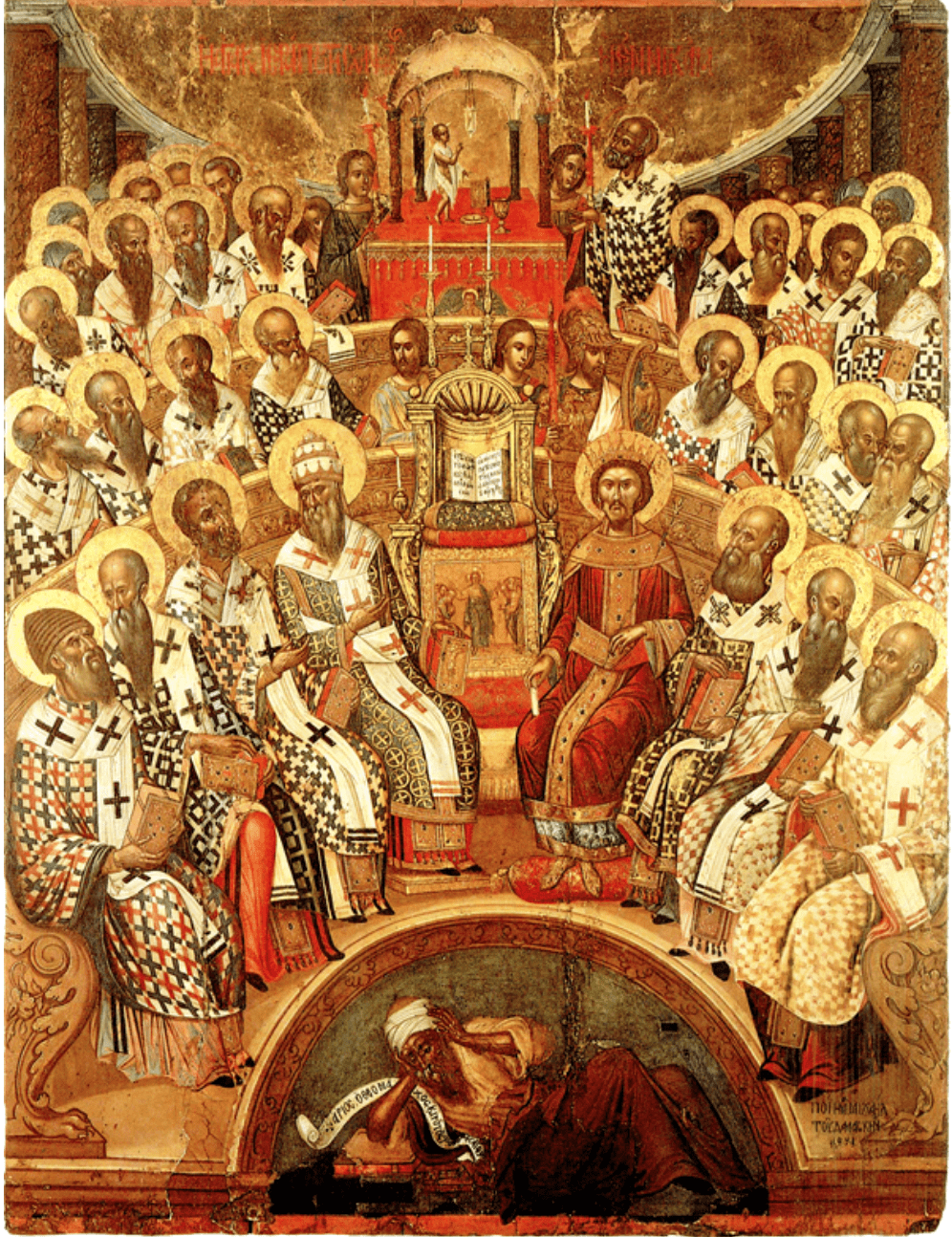 A vote was taken, and it was agreed with a majority show of hands (161 votes to 157) that both divinities were to become one God. Following longstanding Roman custom, Constantine used the official gathering and the regal apotheosis power decree to legally deify two gods as one, with democratic consent. The political act of deification effectively and legally placed Hesus Krishna among the Roman gods as a single individual composite. But since there was no letter “J” in alphabets until around 800 CE, the name evolved into “Jesus Christ” much later.
A vote was taken, and it was agreed with a majority show of hands (161 votes to 157) that both divinities were to become one God. Following longstanding Roman custom, Constantine used the official gathering and the regal apotheosis power decree to legally deify two gods as one, with democratic consent. The political act of deification effectively and legally placed Hesus Krishna among the Roman gods as a single individual composite. But since there was no letter “J” in alphabets until around 800 CE, the name evolved into “Jesus Christ” much later.
3. How Were New Testament Gospels Assembled?
Constantine then instructed his assistant Eusebius to organize the collection of new writings submitted at the council. His instructions were: “Search ye these books, and whatever is good in them, that retain; but whatsoever is evil, that cast away. What is good in one book, unite ye with that which is good in another book. And whatsoever is thus brought together shall be called The Book of Books. And it shall be the doctrine of my people, which I will recommend unto all nations, that there shall be no more war for religions’ sake.”
Constantine believed that the amalgamated collection of myths would unite various opposing religious factions under one story. Merging the supernatural “god” stories of Mithra and Krishna with British Culdean beliefs effectively joined the Council of Eastern and Western leaders. Eusebius then arranged for scribes to produce, “fifty sumptuous copies … to be written on parchment in a legible manner, and in a convenient portable form”
These were to be the “New Testimonies”. He then ordered earlier manuscripts and the records of the council “burnt” and declared that “any man found concealing writings should be beheaded.”
Constantine’s mother Helena became a Christian in 312 CE at the age of 63. He asked her to supervise a journey to Jerusalem to find Christian relics to sanctify the new basilica. Helena went to the holy land three centuries after the death of Jesus Christ, and returned with pieces of the crucifixion cross, nails, a holy tunic, and rope fragments. On her death she was sanctified as Saint Helena.
Constantine died in 337 with the satisfaction of knowing that his merging of many pagan beliefs into a new religion brought many converts. Historical records reveal it was practical self-interest that led him to create Christianity. However, it wasn’t called “Christianity” until the 15th century
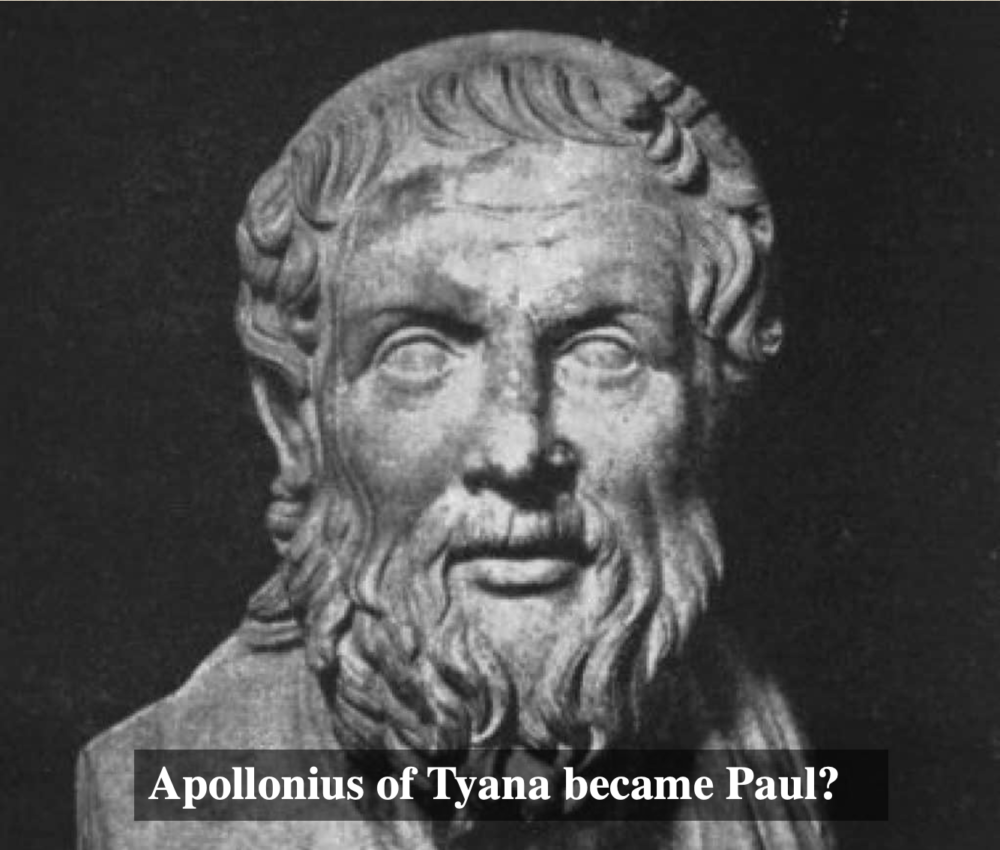 Over the ensuing centuries, the “New Testimonies” were expanded. For example, in 397 they restructured the writings of great occult healer Apollonius of Tyana, a first century wandering sage, to make them part of the New Testimonies. Some say the great Apollonius was actually merged into Jesus of Nazareth creating one “personality”. And since the Latin name for Apollonius is Paulus, the Epistles of Paul now had a new name. Check out writings of Apollonius here.
Over the ensuing centuries, the “New Testimonies” were expanded. For example, in 397 they restructured the writings of great occult healer Apollonius of Tyana, a first century wandering sage, to make them part of the New Testimonies. Some say the great Apollonius was actually merged into Jesus of Nazareth creating one “personality”. And since the Latin name for Apollonius is Paulus, the Epistles of Paul now had a new name. Check out writings of Apollonius here.
A recent discovery of the complete ancient Sinai Bible, said to be the New Testament, revealed a staggering 14,800 editorial changes in the published New Testament, with surprising evidence that refutes the resurrection of Jesus Christ. Modern-day versions of the Gospel of Luke have a staggering 10,000 more words than the same Gospel in the Sinai Bible. However, these inconsistencies have been refuted and debunked by the highest authority.
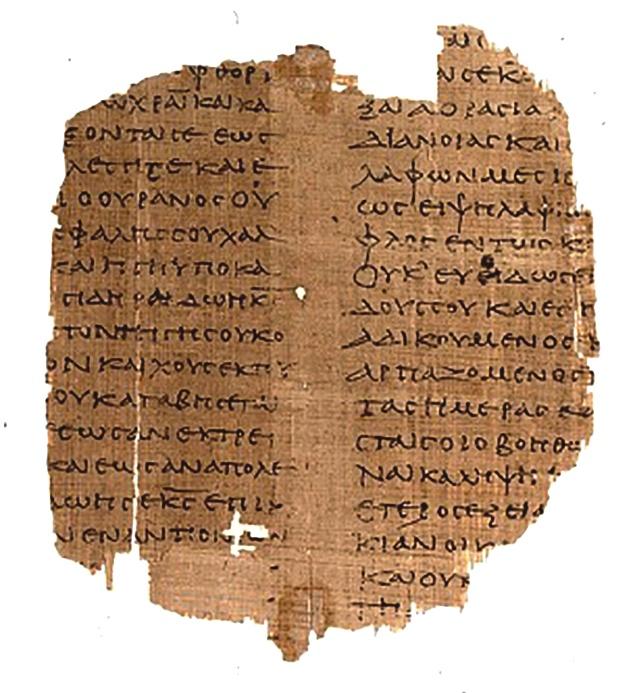 The Encyclopedia Biblica reveals that around 1,200 years of Christian history are unknown: “Unfortunately, only few of the records prior to the year 1198 have been released”. Maybe that’s because Pope Innocent III (1198-1216) suppressed all records of earlier Church history by establishing the Secret Archives. “Church history will be now be established … we shall seek to print our own account”
The Encyclopedia Biblica reveals that around 1,200 years of Christian history are unknown: “Unfortunately, only few of the records prior to the year 1198 have been released”. Maybe that’s because Pope Innocent III (1198-1216) suppressed all records of earlier Church history by establishing the Secret Archives. “Church history will be now be established … we shall seek to print our own account”
“It thus appears that the present titles of the Gospels are not traceable to the evangelists themselves … They are supplied with titles which, however ancient, do not go back to the respective authors of those writings.” – Catholic Encyclopedia
Oh dear, this indicates that there are no genuine apostolic Gospels, and that the Church has invented the very foundations of Christian faith. This would suggest that the New Testament is not divine in origin, and Christian texts have no sacred authority. For centuries, fabricated Gospels bore Church certification of authenticity, but they are now confessed to be invented? Perhaps that is why Pope Leo X (d. 1521) called Christ a “fable”
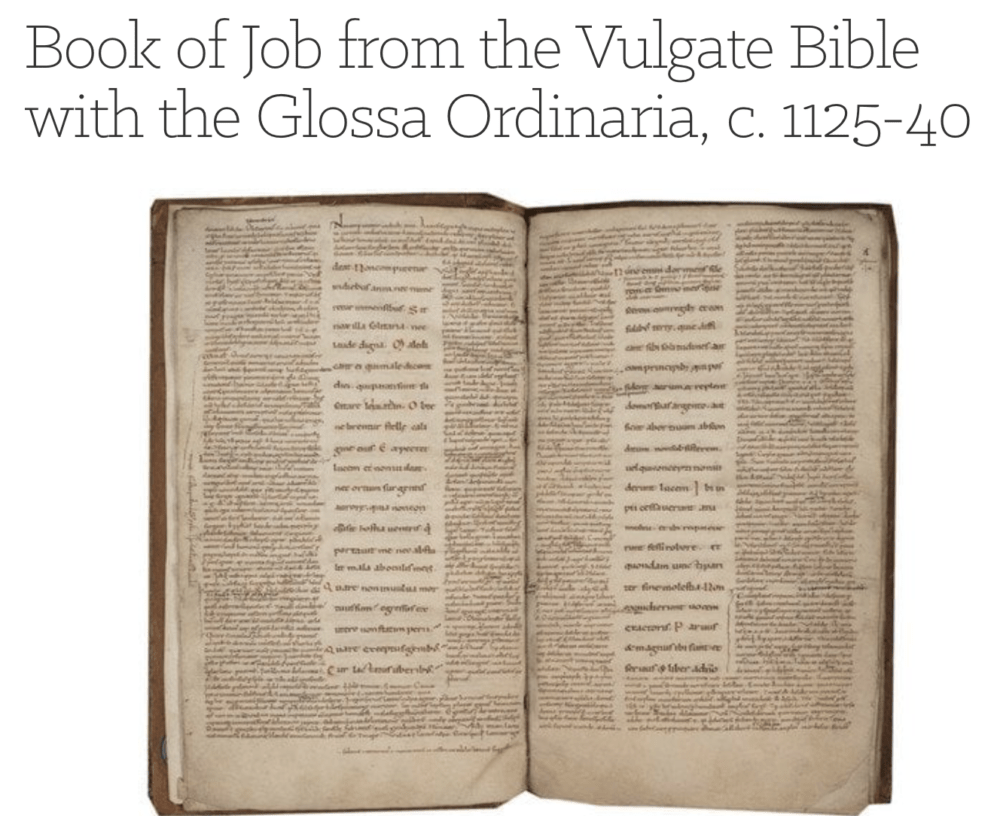
The first Roman Bible was called the “Vulgate” meaning “common” or “colloquial”, translated into everyday Latin from Hebrew and Greek. Later they added “Glossa” commentaries on the pages, which were considered one of the great intellectual achievements of the 12th century, every book copied by hand.
In 392 CE Emperor Theodosius declared Christianity the official and sole religion of the Roman Empire. Pagan temples were converted or destroyed. Mithraism, Sun worship and all other religions were prohibited on penalty of confiscation of property, torture, slavery, or death. The ancient library of Alexandria, Egypt was destroyed and heretic books burned. The great prophet Mohammad brought enlightened vision to the Mesopotamian God “El” who was came to be pronounced “Allah”. In Roman areas, all temples to the Pagan gods became Catholic churches. Rebirth and reincarnation were removed from the teachings. Astrology was removed from the schools and ridiculed as heretical. Cosmic knowledge was officially reserved for secret societies and the Emperor.
After the Roman Empire fell, it transformed into a global church infusing every part of our lives in the West, and even embraced the colonies. While the Bible is a sacred document and it is real, we must also acknowledge that the scriptures have been carefully edited for purposes of consistency and control. There have been some translation errors and many original scriptures omitted. Christianity was created essentially as an entirely new religion, neatly assembling all the elements from existing folk traditions and other religions.
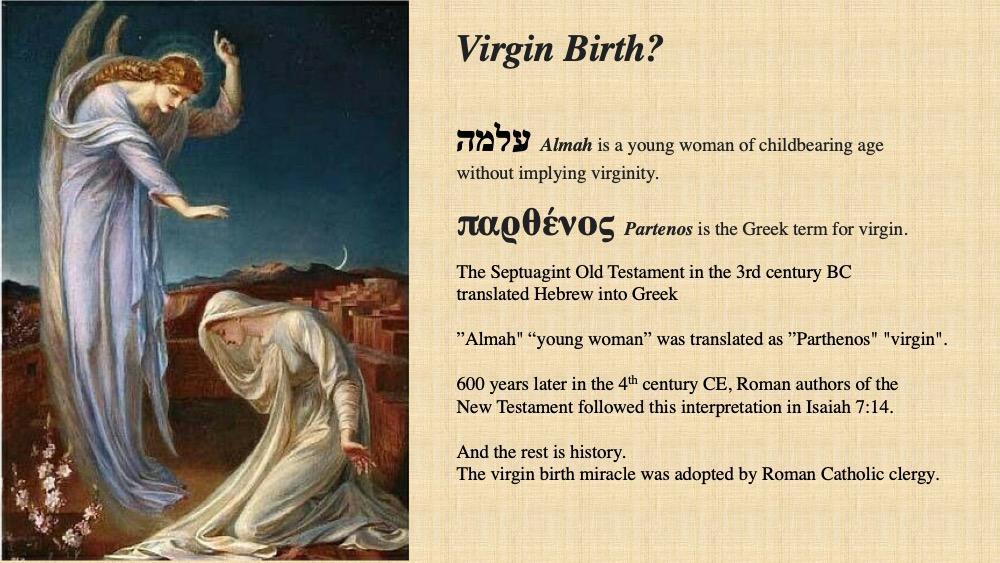
4. Jesus’ mother Mary not a Virgin? Mistranslation from Hebrew.
Everyone knows the story of the Virgin Mary in the Bible. In fact, virgin birth is a cornerstone of Christianity. However, the nature of the mysterious Immaculate Conception that led to the birth of baby Jesus has recently been questioned. It seems the original Hebrew Bible used the word “Almah” meaning “Young woman of childbearing age”. When it was later translated into Greek, the word “Parthenos” meaning “Virgin” was used. The Hebrew word for virgin “bethulah” cannot be found anywhere in the original Hebrew. Apparently, the original writer intended for it to be read as “young girl”, not “virgin”.
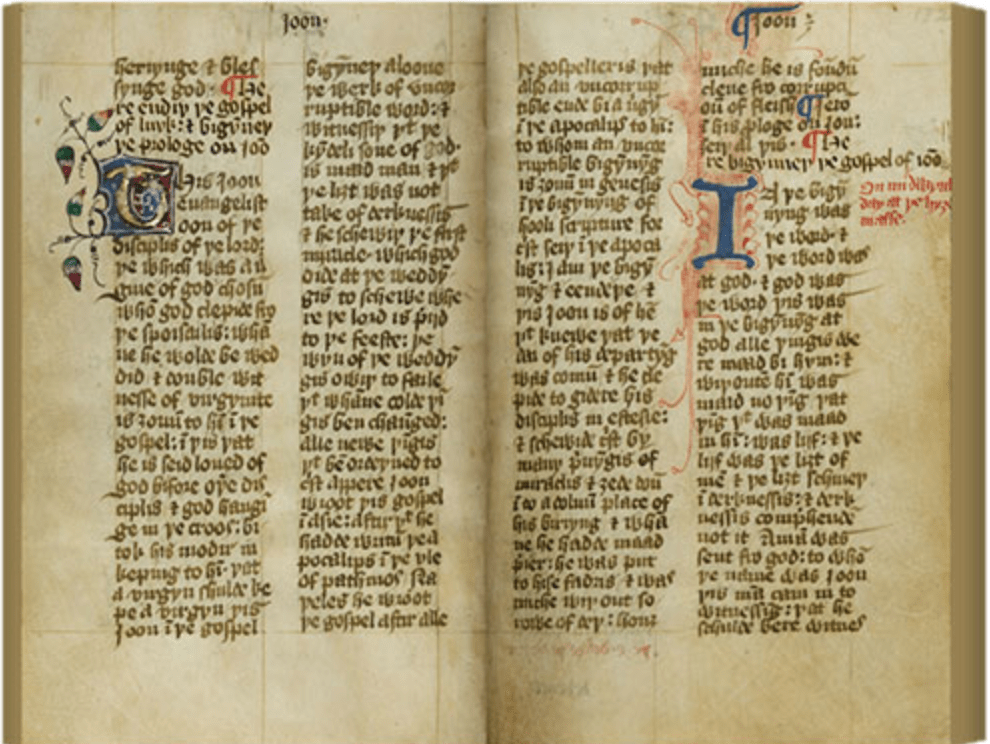
John Wycliffe Bible design was famous, a gold frame decorated with flowers and leaves and English text in hand-written 14th century Middle English.
5. The First English Bible translation was Illegal, by John Wycliffe!
Throughout medieval times it was forbidden to translate the Bible into local languages. The English church was controlled by the Pope in Rome, and all Christian services were conducted in Latin. John Wycliffe was an Oxford professor in the 14th century CE who believed that Bible teachings were more important than the rules and regulations of the earthly clergy and the Pope. Wycliffe translated the Vulgate Bible from Latin into readable Middle English, as he believed that everyone should be able to understand it directly.
Wycliffe inspired the first complete English translation of the Bible, even though King Henry IV periodically ordered Bible burnings to punish heretics in 1401. For a while Wycliffe’s Bible escaped destruction.
 Wycliffe believed everyone should have access to the scriptures. Was Abraham Lincoln a Wycliffe fan? These phrases echo his Gettysburg address.
Wycliffe believed everyone should have access to the scriptures. Was Abraham Lincoln a Wycliffe fan? These phrases echo his Gettysburg address.
Although the archbishop of Canterbury condemned him, Wycliffe was well connected and lucky, or he would have been executed for heresy. He had the support of his Oxford University colleagues and influential laymen. All this saved his life. However, forty years after his death, Wycliffe was charged as a heretic, his body was dug up, burned, and scattered along with his books. Whew! Fortunately, his English translations had a lasting influence.
Wycliffe was a prolific writer with an enormous English vocabulary and coined several words for the first time. In fact, more than 1100 words are recorded for the first time in his Bible. For example, Wycliffe is the earliest known writer to use the word ‘abominable’ to describe people, in the Book of Psalms. BTW, you can read all 746 pages of Wycliffe’s bible online here!
6. William Tyndale killed for heresy, but his Bible lives on!
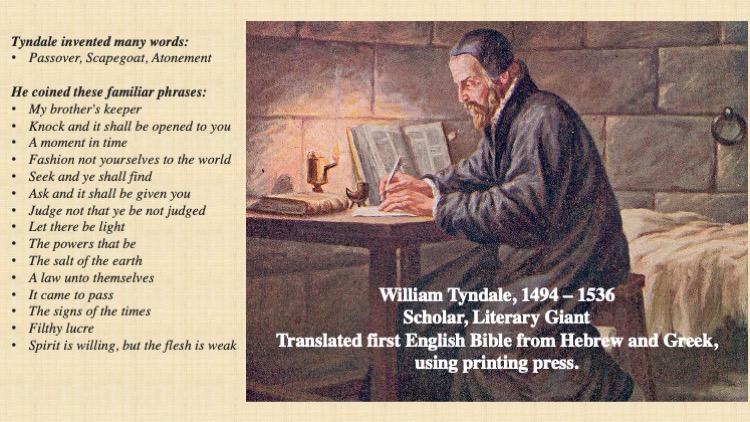
William Tyndale was an English Renaissance man who traveled widely and knew Greek, Hebrew, and Latin. He had access to Protestant teachings from Martin Luther and other intellectuals all over Europe.
 Tyndale believed all believers should have direct access to the word of God. Several partial English translations had been made from the 7th century onwards. However, religious ferment caused by Wycliffe’s Bible in the late 14th century led to the death penalty for anyone possessing the scriptures in English. However, Bible translations were available in all other major European languages. Tyndale was the first English Bible to use Jehovah (“Iehouah”) as God’s name as preferred by English Protestant Reformers, and this was considered a direct challenge to the hegemony of both the Catholic Church and the Church of England.
Tyndale believed all believers should have direct access to the word of God. Several partial English translations had been made from the 7th century onwards. However, religious ferment caused by Wycliffe’s Bible in the late 14th century led to the death penalty for anyone possessing the scriptures in English. However, Bible translations were available in all other major European languages. Tyndale was the first English Bible to use Jehovah (“Iehouah”) as God’s name as preferred by English Protestant Reformers, and this was considered a direct challenge to the hegemony of both the Catholic Church and the Church of England.
A copy of Tyndale’s “The Obedience of a Christian Man” (1528), which argued that the king of a country should be the head of that country’s church rather than the Pope, fell into the hands of the English King Henry VIII, providing him a rationale to break the Church in England from the Catholic Church in 1534. However, sadly in 1530, Tyndale’s “The Practyse of Prelates” also fell into the hands of the King. It opposed Henry’s annulment of his own marriage on the grounds that it was contrary to scripture. Oh dear! Big mistake. This probably led to his death.
Fleeing England, Tyndale went into hiding in Flanders. He was arrested and jailed in the castle of Vilvoorde near Brussels for over a year. Finally in 1536, he was convicted of heresy (blasphemy) and executed by strangulation, after which his body was burnt at the stake. His last words echoed out as he shouted his dying wish: “Lord Open the King of England’s Eyes!” It seems his prayer was fulfilled the following year with King Henry’s “Matthew Bible”, which was mostly taken from Tyndale’s work.

From John Foxe’s Book of Martyrs, 1563.
Tyndale’s translation of the Bible has influenced all subsequent English translations, and it still survives in most translations today. In 1611 the King James Bible’s changed the world as 47 scholars adopted about 80% of Tyndale’s work. Recently, Tyndale was placed 26th in the BBC poll of the 100 Greatest Britons.

7. King James Bible Proves Divine Right Comes from God
When King Henry VIII broke away from the Roman Catholic Church in 1532, he sought to established himself as the de-facto head of the Church of England. A few years later, King James was in litigation with the Pope in Rome, maintaining the divine right of kings to govern and rule their people. This concept did not sit well with the Pope.
In 1604 when King James commissioned the English Bible translation, his desire was to respond to the discord caused by Wycliffe and Tyndale. He wanted to document the legal royal power of the King in the new English bible. All it took was a few substitutions. The English word “government” was slipped into the English translations for this political purpose.
The Jesuits from Rome conspired to assassinate King James in the Gunpowder Plot of 1605. The plan to explode the Parliament building was foiled just hours before the King was scheduled to sit with British government. About midnight on the night before, Sir Thomas Knyvet, a justice of the peace, found Guy Fawkes lurking in a cellar under the Parliament building. He ordered the premises searched and found some 20 barrels of gunpowder. Fawkes was taken into custody, tortured on the rack, and revealed the Roman Catholic conspiracy to remove England’s Protestant government and replace it with Catholic leadership. Ever since, November 5 is known as Guy Fawkes Night, celebrated with fireworks!
The King James Bible project was a huge success, and it still tops the list of popular bibles. Roughly 80% of all bibles purchased now are the KJV, which is a tidy sum in the brisk bible market of $425 million dollars per year.
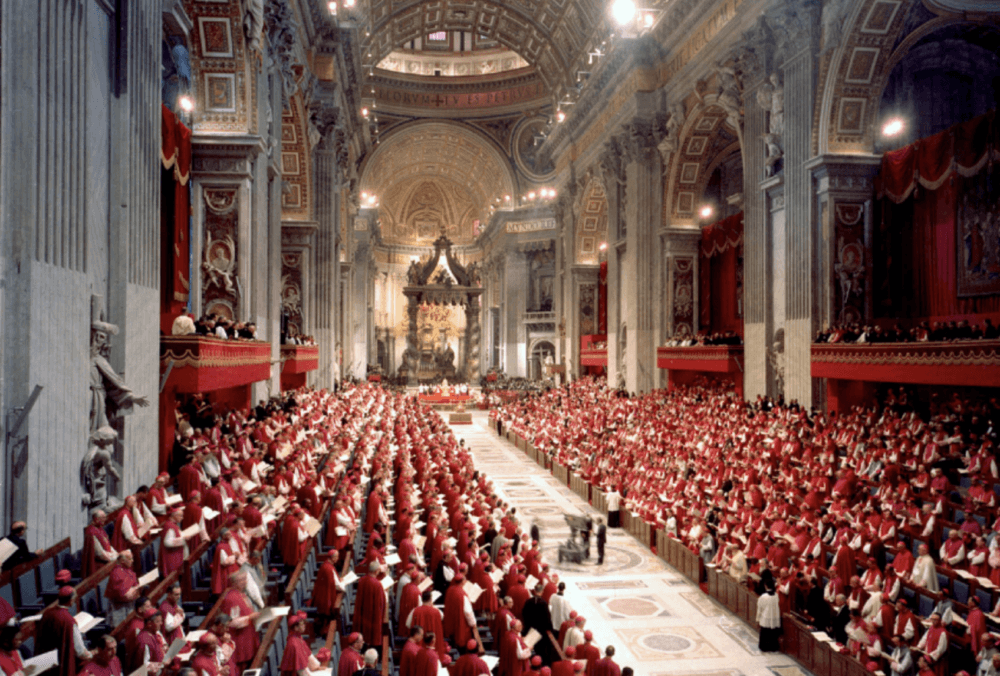
8. 1962 Second Vatican Council Launched Modern Bible Revision to Include All Christian Sects.
In 1962 the Second Vatican Council addressed relations between the Catholic Church and the modern world. A vast assembly of 2,400 Roman Catholic bishops from all over the world made a procession through St. Peter’s Square toward the Basilica for the solemn opening. Inside the splendidly appointed church, the bishops took their places in long rows to take part in the ceremony. Near the altar sat observers from other Christian communities invited to attend the council. The Council, through the Holy See, was formally opened without invoking infallibility under the pontificate on 11 October 1962. Pope John XXIII’s opening address had the character of a Magna Carta.
Revisions of the Bible are ongoing. Several changes resulted from the Council. One of them was to create the first truly modern, readable revision of the Bible. Not to be confused with the New American Standard Bible, the New American Bible (NAB) is a Catholic Bible translation first published in 1970. It was translated by the Confraternity of Christian Doctrine under the liturgical principles and reforms of the Second Vatican Council (1962-1965) after a long and confused history of translation, re-translation, revision and re-revision. At present, three translations are approved for Catholic liturgical use: the New Jerusalem Bible, the RSV, and the New American Bible (NAB). However, sadly one Roman Catholic called it “a wretched translation. It succeeds in being, at the same time, loose, stilted, breezy, vulgar, opaque, and relentlessly averse to literary grace.”
9. Moral of the Story: All Bibles have been Tweaked.
It’s just a reminder to cultivate our own path. We may never know the hidden purposes behind it. So choose your translation carefully. My favorites today are the Holy Name KJV and the Leningrad Codex, both available online. Even better, now is the time to build our own relationship with God. That’s a highly personal matter between you and the Supreme Power. It’s beyond any other person, religion, or even words.
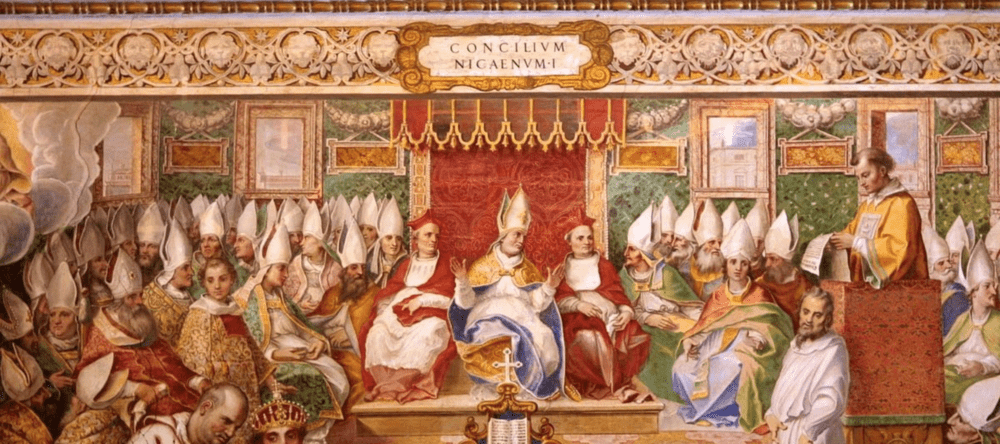
Suggested Reading:
- Yahweh – LORD, https://www.youtube.com/watch?v=eLrGM26pmM0
- Vatican Controlled: The Deception Regarding Our Modern Bible Translations, https://coercioncode.com/2020/01/23/vatican-controlled-the-deception-regarding-our-modern-bible-translations/
- Catholic Bibles Blog promotes the Nestle-Aland 28th Critical Text Edition, Catholic Bibles Blog promotes the Nestle-Aland 28th Critical Text Edition, http://www.catholicbiblesblog.com/2013/09/novum-testamentum-graece-nestle-aland.html
- http://www.catholicbiblesblog.com/2013/09/novum-testamentum-graece-nestle-aland.htmlThe New Versions Are Vatican Corrupted And Controlled Bibles https://safeguardyoursoul.com/the-new-versions-are-vatican-corrupted-and-controlled-bibles/
- “The Text of the New Testament”, by Kurt Aland and Barbara Aland, 1987
- “The Amplified Bible of 2015”, by the Lockman Foundation, 2015
- “Bible Word Count”, by Vaughn Aubuchon, Vaughn’s Summaries, online
- “Amplified Bible Version Information”, by the Lockman Foundation, 2015, online
- “Perspectives on the ending of Mark: 4 Views”, by David Alan Black, 2008
- “A Possible Case of Lukan Authorship”, by Henry J. Cadbury, The Harvard Theological Review, July, 1917
- “When God Spoke English: The Making of the King James Bible”, by Adam Nicolson, 2011
- “Alexander the Corrector: the tormented genius who unwrote the Bible”, by Julia Keay, 2005
- “Power and Glory: Jacobean England and the making of the King James Bible”, by Adam Nicolson, 2003
- “Misquoting Jesus: the story behind who changed the Bible and why”, by Bart D. Ehrman, 2005
- “Extremely rare Wicked Bible goes on sale”, by Alison Flood, The Guardian, October 21, 2015
- “When God Spoke Greek”, by Timothy Michael Law, 2013
- “The Bible Doesn’t Say That,” by Dr. Joel M. Hoffmann, 2013
- “And God Said: How Translations Conceal the Bible’s Original Meaning”, by Dr. Joel M. Hoffmann, 2009
- “When the King Saved God”, by Christopher Hitchens, Vanity Fair, May, 2011
- “The Bible in English: history and influence”, by David Daniell, 2003
- “God’s Secretaries: the making of the King James Bible”, by Adam Nicolson, 2003
- “The Real Story Behind the Translation of 2 Timothy 3:16”, by Frank Nelte, nelte.net, November 2008, online
- Did The Catholic Church Give Us The Bible? – David W. Daniels
- Answers To Your Bible Version Questions – David W. Daniels
- To see which words Satan has removed from your Bible version, click on Modern Bible Deception Verse Study.
- For further study on the corruption of the Bible, watch the documentaries called “Tares Among the Wheat”
- And “A Lamp In The Dark: The Untold History of the Bible”
- God’s Word to Women, by Katharine Bushnell
- A New Gospel for Women: Katharine Bushnell and the Challenge of Christian Feminism. By Kobes Du Mez’s
- http://contradictionsinthebible.com/firstborn-sons-redeemed-or-not/
- Gap Theory Creationism: https://creationwiki.org/Gap_theory_creationism
- Young Mary vs Virgin Mary: A mistranslation of epic proportions, https://www.komaberribat.com/en/young-mary-vs-virgin-mary-a-mistranslation-of-epic-proportions/
- Confessional: https://en.wikipedia.org/wiki/Confessional
- Indulgences, http://law2.umkc.edu/faculty/projects/ftrials/luther/lutherindulgences.html
- https://www.wycliffe.sg/blog/septuagint-translation-seventy
- https://www.catholic.com/encyclopedia/septuagint-version
- The Forged Origins of the New Testament, https://www.bibliotecapleyades.net/biblianazar/esp_biblianazar_40.htm


